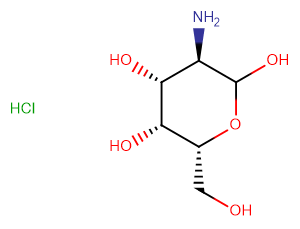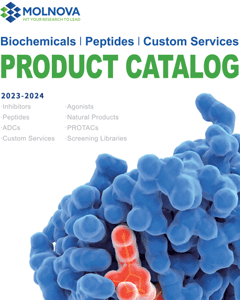
D-Galactosamine HCl
CAS No. 1772-03-8
D-Galactosamine HCl( —— )
Catalog No. M21206 CAS No. 1772-03-8
D-Galactosamine HCl?hepatotoxicity is associated with endotoxin sensitivity and mediated by lymphoreticular cells in mice.
Purity : >98% (HPLC)
 COA
COA
 Datasheet
Datasheet
 HNMR
HNMR
 HPLC
HPLC
 MSDS
MSDS
 Handing Instructions
Handing Instructions
| Size | Price / USD | Stock | Quantity |
| 50MG | 38 | In Stock |


|
| 100MG | Get Quote | In Stock |


|
| 200MG | Get Quote | In Stock |


|
| 500MG | Get Quote | In Stock |


|
| 1G | Get Quote | In Stock |


|
Biological Information
-
Product NameD-Galactosamine HCl
-
NoteResearch use only, not for human use.
-
Brief DescriptionD-Galactosamine HCl?hepatotoxicity is associated with endotoxin sensitivity and mediated by lymphoreticular cells in mice.
-
DescriptionD-Galactosamine HCl?hepatotoxicity is associated with endotoxin sensitivity and mediated by lymphoreticular cells in mice.
-
In Vitro——
-
In VivoAnimal Model:C57BL/6J miceDosage:400 mg/kg, together with Lipopolysaccharide (HY-D1056) (LPS, 10 μg/kg) Administration:i.p.Result:Induces a model of acute liver failure, with necrosis in the liver.Increased serum ALT and AST levels and serum inflammatory cytokine concentrations, such as TNF-α, IFN-γ, IL-1β, IL-6, and IL-18.
-
Synonyms——
-
PathwayOthers
-
TargetOther Targets
-
RecptorOthers
-
Research Area——
-
Indication——
Chemical Information
-
CAS Number1772-03-8
-
Formula Weight215.63
-
Molecular FormulaC6H14ClNO5
-
Purity>98% (HPLC)
-
SolubilityDMSO:25mg/ml(215.63mM)
-
SMILESCl.N[C@H]1C(O)O[C@H](CO)[C@H](O)[C@@H]1O
-
Chemical Name——
Shipping & Storage Information
-
Storage(-20℃)
-
ShippingWith Ice Pack
-
Stability≥ 2 years
Reference
1.Chojkier M Fierer J . D-Galactosamine Ire atotoxicit Is Associated With Endotoxin Sensitivity and Mediated by Lymphoreticular Cells in Mice[J]. Gastroenterology 1985 88(1):115-121.
molnova catalog



related products
-
Quercetin 3,4-digluc...
Quercetin 3,4'-diglucoside possesses antioxidant activities.
-
YM 534
YM 534 has antitumor activity and platelet aggregation activity, inhibits photoaffinity labeling of deglycosylated P-glycoprotein, and can be used to study leukemia.
-
NSC19005
NSC19005 is structurally related to Betahistine. NSC19005 is a dimer of Betahistine.



 Cart
Cart
 sales@molnova.com
sales@molnova.com


